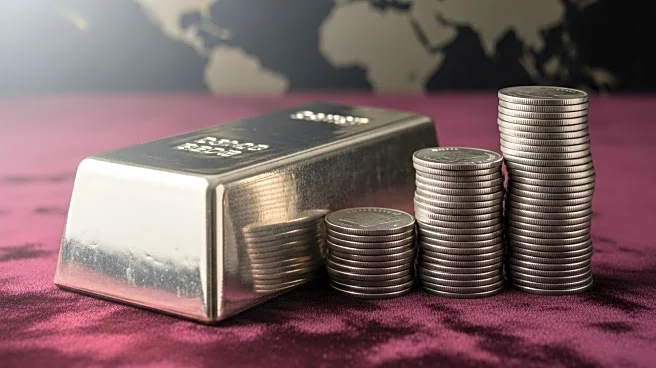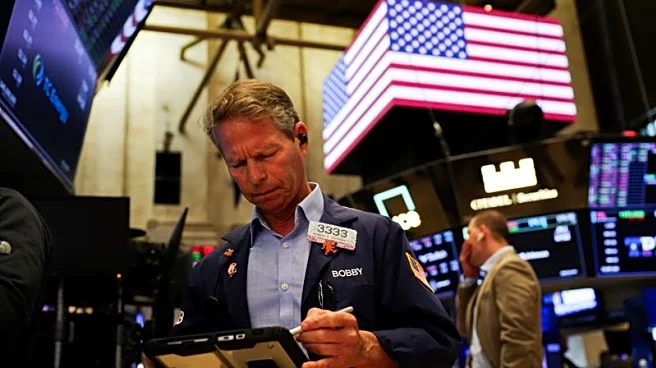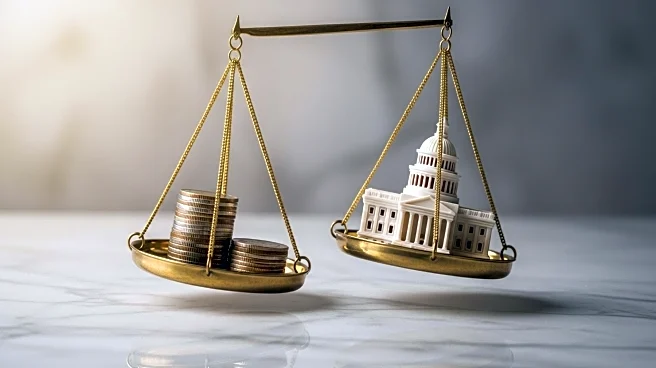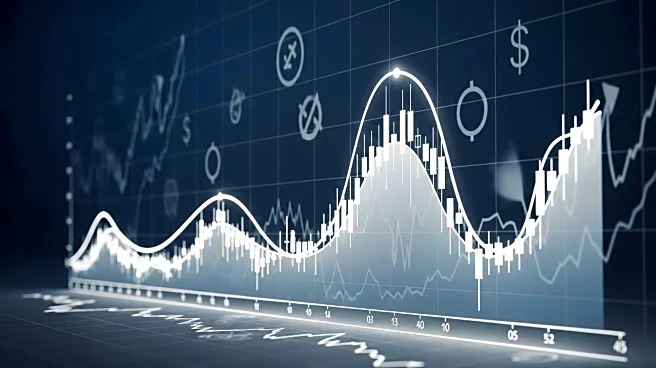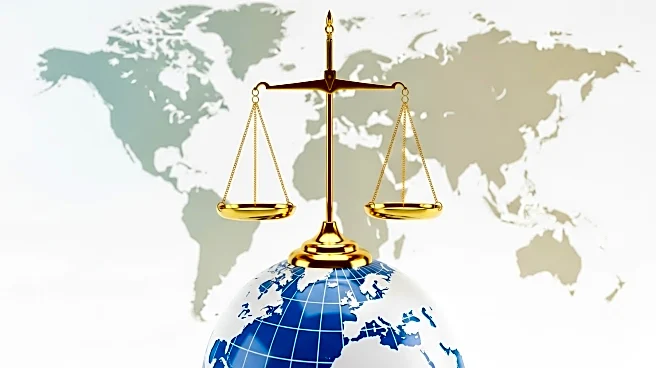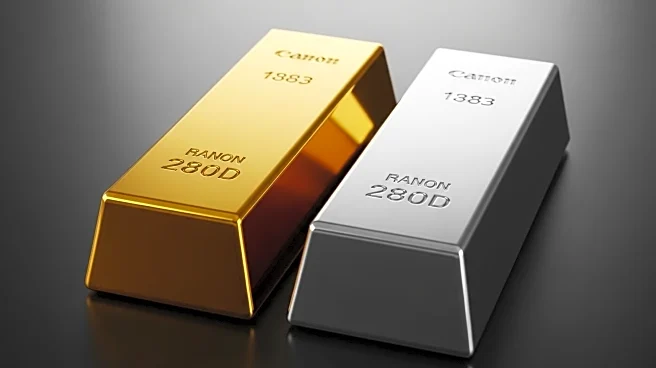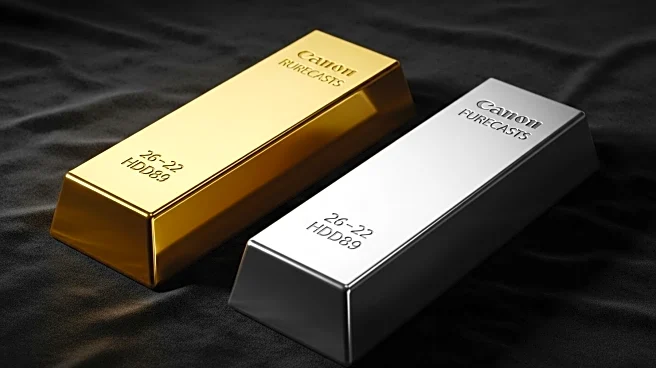What's Happening?
Silver prices have reached an all-time high, trading at approximately $52.6 per ounce, surpassing the previous record set in January 1980. This surge is driven by a combination of factors including a historic
shortage of physical silver in London, increased demand for safe-haven assets amid geopolitical and economic uncertainties, and robust industrial demand. The market has seen significant inflows into silver ETFs, with about 95 million ounces added in the first half of 2025. Major banks are forecasting even higher prices, with Bank of America predicting $65 per ounce by 2026. However, analysts warn that the silver market's thinness could lead to volatility, and a pullback in demand could trigger a sharp correction.
Why It's Important?
The rise in silver prices has significant implications for various stakeholders. Investors are benefiting from the surge as silver outpaces other assets, including gold, which has also seen substantial gains. The shortage of physical silver is causing logistical challenges, with traders moving silver bars across continents to meet demand. Industrial sectors that rely on silver, such as electronics and solar panel manufacturing, may face increased costs due to the price hike. The geopolitical tensions and economic uncertainties driving the demand for safe-haven assets like silver highlight the fragility of global markets and the potential for further disruptions.
What's Next?
The outlook for silver remains bullish, with ongoing macroeconomic pressures and structural deficits expected to support higher prices. However, potential risks include policy changes, such as the U.S. Section 232 inquiry into critical minerals, and fluctuations in investor sentiment. A stronger U.S. dollar or unexpected changes in Federal Reserve policy could also impact silver prices. Stakeholders will be closely monitoring these developments as they navigate the challenges and opportunities presented by the current market dynamics.
Beyond the Headlines
The silver market's volatility underscores the broader challenges facing commodity markets, where supply chain disruptions and geopolitical tensions can lead to significant price fluctuations. The reliance on silver for both industrial applications and as a monetary hedge highlights the dual nature of commodities as both essential resources and investment vehicles. This dynamic may lead to increased scrutiny and regulatory attention as governments and industries seek to stabilize markets and ensure sustainable supply chains.
